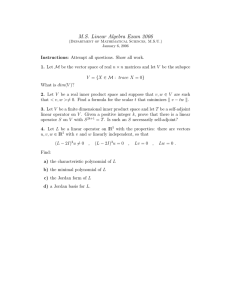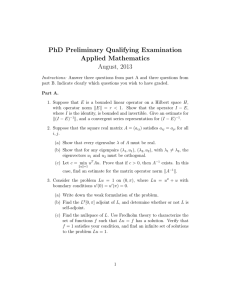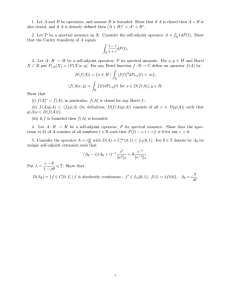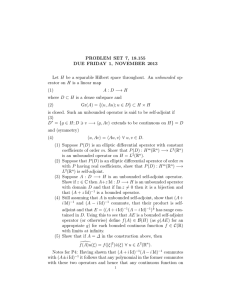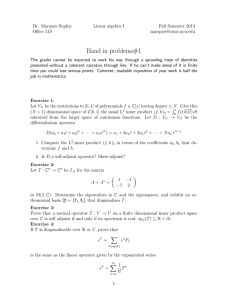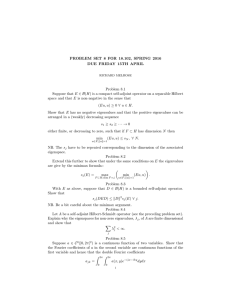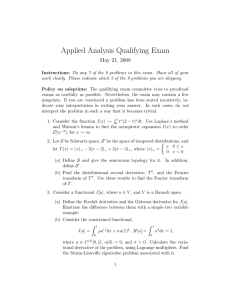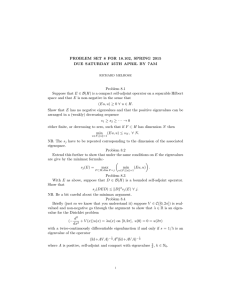MATH 520 Homework Spring 2014
advertisement
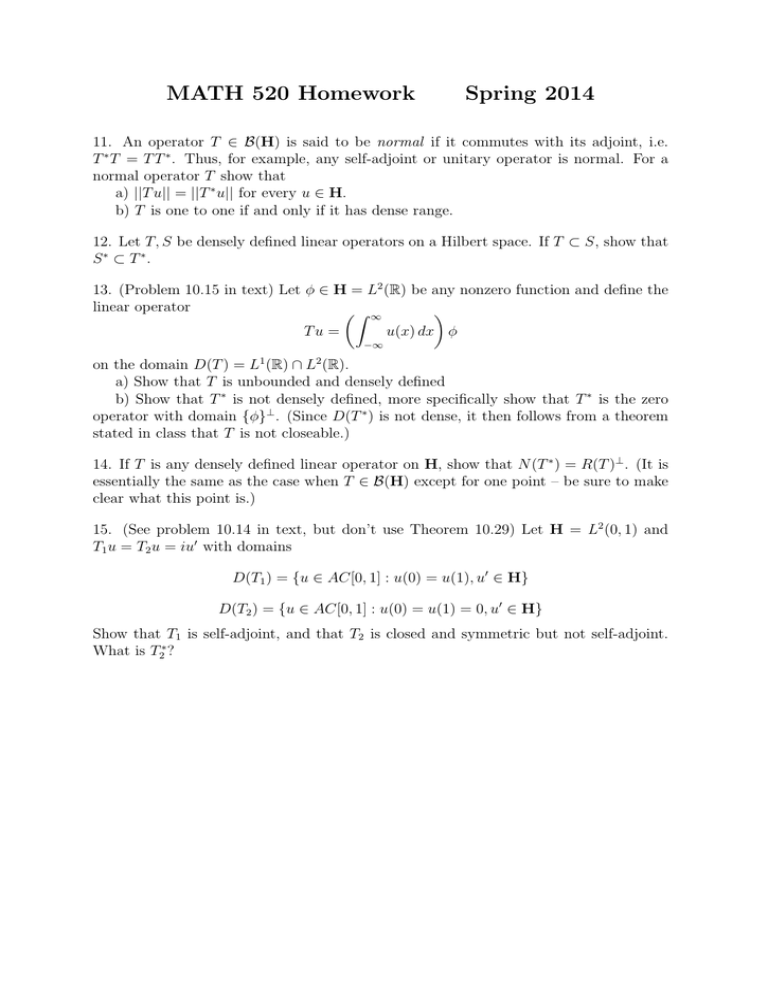
MATH 520 Homework
Spring 2014
11. An operator T ∈ B(H) is said to be normal if it commutes with its adjoint, i.e.
T ∗ T = T T ∗ . Thus, for example, any self-adjoint or unitary operator is normal. For a
normal operator T show that
a) ||T u|| = ||T ∗ u|| for every u ∈ H.
b) T is one to one if and only if it has dense range.
12. Let T, S be densely defined linear operators on a Hilbert space. If T ⊂ S, show that
S ∗ ⊂ T ∗.
13. (Problem 10.15 in text) Let φ ∈ H = L2 (R) be any nonzero function and define the
linear operator
Z ∞
Tu =
u(x) dx φ
−∞
on the domain D(T ) = L1 (R) ∩ L2 (R).
a) Show that T is unbounded and densely defined
b) Show that T ∗ is not densely defined, more specifically show that T ∗ is the zero
operator with domain {φ}⊥ . (Since D(T ∗ ) is not dense, it then follows from a theorem
stated in class that T is not closeable.)
14. If T is any densely defined linear operator on H, show that N (T ∗ ) = R(T )⊥ . (It is
essentially the same as the case when T ∈ B(H) except for one point – be sure to make
clear what this point is.)
15. (See problem 10.14 in text, but don’t use Theorem 10.29) Let H = L2 (0, 1) and
T1 u = T2 u = iu0 with domains
D(T1 ) = {u ∈ AC[0, 1] : u(0) = u(1), u0 ∈ H}
D(T2 ) = {u ∈ AC[0, 1] : u(0) = u(1) = 0, u0 ∈ H}
Show that T1 is self-adjoint, and that T2 is closed and symmetric but not self-adjoint.
What is T2∗ ?
